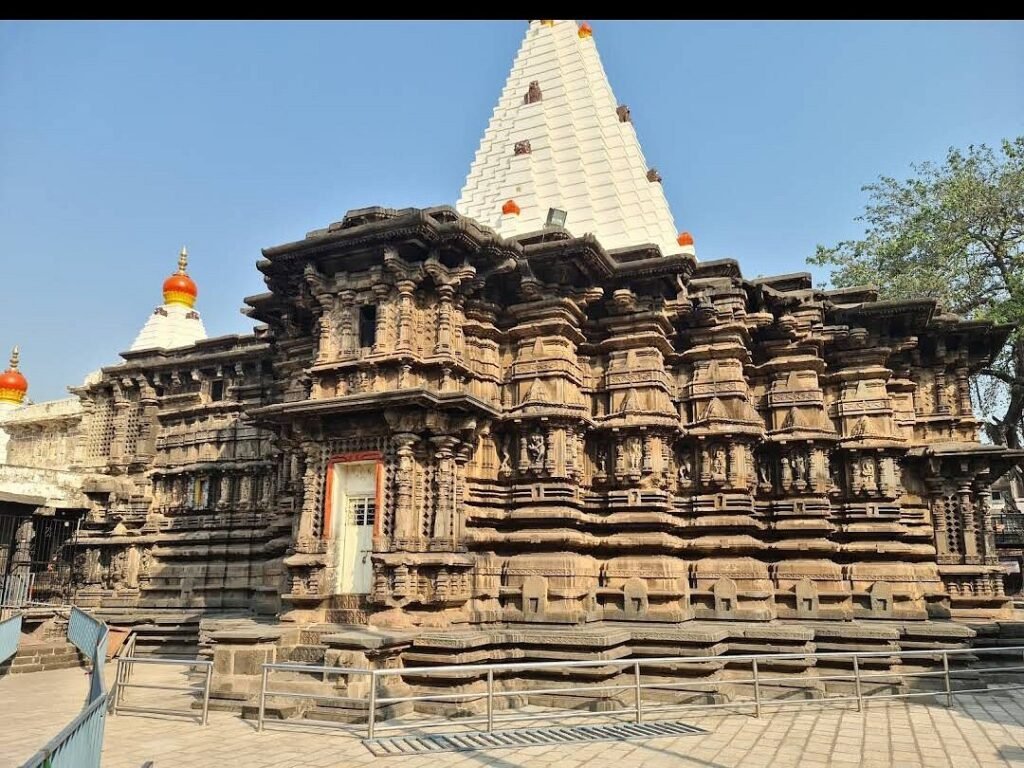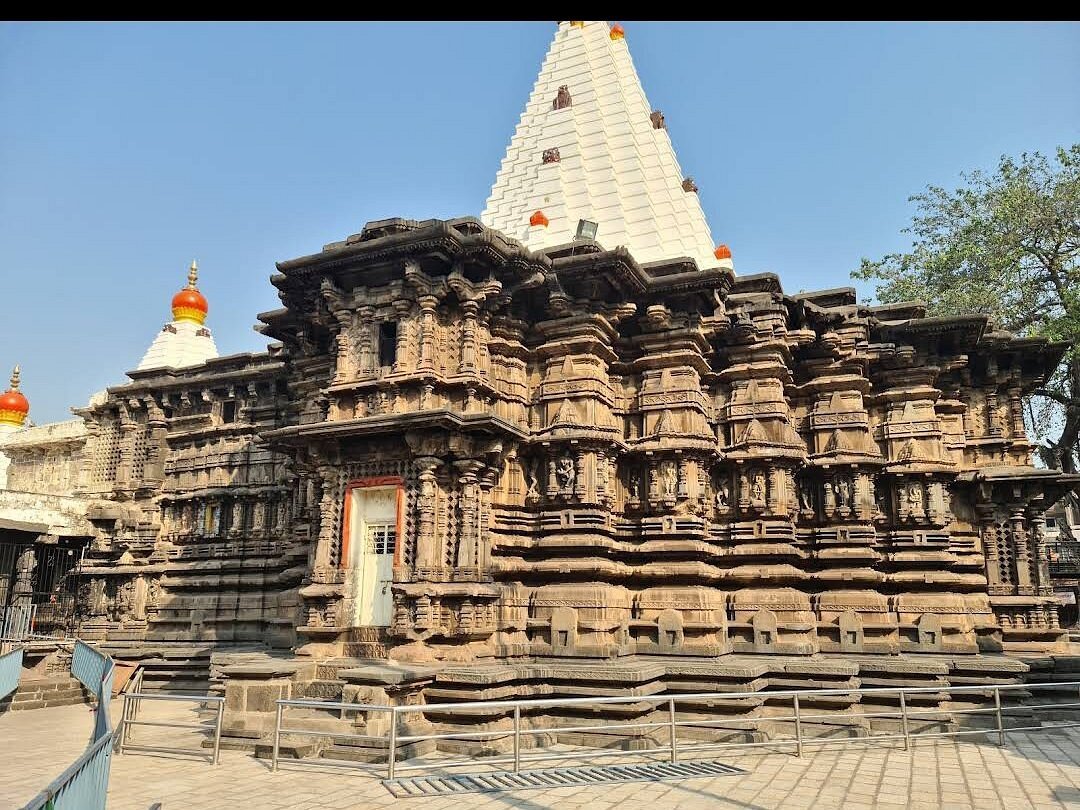The Kolhapur Mahalaxmi Temple history is deeply rooted in India’s ancient spiritual and cultural traditions. Also known as the Ambabai Temple, this sacred shrine is one of the most revered in India. Nestled in the historic city of Kolhapur in Maharashtra, this temple is one of the Shakti Peethas, a sacred site where the divine feminine energy is believed to reside. With a history that spans over a millennium, the temple is not just a spiritual center but also an architectural and cultural marvel. This blog delves deep into the Kolhapur Mahalaxmi Temple history, unraveling its origin, mythology, royal patronage, and modern-day significance.
Mythological Origins and Shakti Peeth Connection

The temple is believed to be one of the 108 Shakti Peethas mentioned in various Puranas. According to Hindu mythology, the Goddess Sati, wife of Lord Shiva, immolated herself at her father Daksha’s yajna. In immense grief, Shiva carried her body across the universe. Lord Vishnu, in an effort to relieve Shiva of his sorrow, used his Sudarshan Chakra to cut Sati’s body into pieces. The body parts fell in different places, forming the Shakti Peethas.
It is believed that the eyes of Sati fell at the location of the current Mahalaxmi Temple, making Kolhapur a spiritually potent destination for worshippers of the Divine Mother.
The deity worshipped here is Mahalaxmi or Ambabai, the consort of Lord Vishnu. This unique aspect also gives the temple a Vaishnavite significance, even though it’s part of the Shakta tradition.
Historical Foundation and Chalukya Architecture
The Mahalaxmi Temple is a prime example of Chalukyan architecture and is estimated to have been constructed around the 7th to 8th century CE. The original temple is believed to have been built by the Chalukya dynasty, who were great patrons of art and architecture. The use of locally sourced black basalt stone, intricate carvings, and the mandapa (pillared hall) design reflect the architectural style of that era.
Over the centuries, the temple underwent several renovations and additions, notably during the reigns of:
- Silhara Dynasty (9th to 12th century)
- Yadava Dynasty
- Maratha Empire under Chhatrapati Shivaji Maharaj and later under Maharani Tarabai
These rulers contributed significantly to the maintenance, expansion, and enrichment of the temple.
The Idol of Goddess Mahalaxmi
The idol of Mahalaxmi is carved from black stone and stands approximately 3 feet tall. She has four arms, each holding symbolic items: a citrus fruit, a mace, a shield, and a bowl. The idol is adorned with precious jewelry and garments, and is placed on a stone platform.
What makes the idol special is that it is said to be self-manifested (Swayambhu) and has not been installed through rituals. The deity faces west, which is considered unique, as most Hindu deities face east.
Architectural Features
The temple complex spans a large area and comprises:
- Main Sanctum (Garbhagriha)
- Mandapam (Hall)
- Deepastambha (Lamp Tower)
- Shrines for other deities such as Lord Ganesha, Lord Vishnu, and Goddess Saraswati
- Mahadwara (Main Entrance) with a beautifully sculpted arch
The intricate carvings on the pillars, walls, and ceilings depict mythological tales and floral patterns, showcasing the craftsmanship of the Chalukyan artisans.
Role During the Maratha Era
During the Maratha rule, the temple gained renewed attention and significance. Chhatrapati Shivaji Maharaj, a devout worshipper of the goddess, is believed to have visited the temple frequently to seek blessings before major military campaigns.
His daughter-in-law, Maharani Tarabai, took active interest in the temple’s affairs and carried out extensive renovations. Under her supervision, several festivals and rituals were institutionalized, and the temple became a center for political as well as religious gatherings.
The Kirnotsav Festival – A Marvel of Solar Alignment
One of the most fascinating features of the Mahalaxmi Temple is the Kirnotsav Festival. This biannual event occurs around January 31st and November 9th, when the sun’s rays fall directly on the idol’s face, feet, and chest in a specific sequence.
This astronomical alignment shows the engineering brilliance of ancient temple architects who constructed the temple in such a way that sunlight enters through a specific window only on these dates.
Thousands of devotees and tourists visit the temple during this time to witness the divine “sun blessing.”
Festivals and Rituals
The temple celebrates a host of festivals with grandeur, including:
- Navratri – Nine days of celebration with special decorations and processions
- Kiranotsav – Solar alignment celebration
- Diwali and Dussehra – Traditional Hindu festivals celebrated with lights and devotion
- Lalkari – A local festival where the deity is taken on a procession around the city
Daily rituals include morning aarti, naivedyam (offering of food), and evening poojas, conducted with traditional Vedic chanting.
Cultural and Social Impact
Beyond religious devotion, the Kolhapur Mahalaxmi Temple has had a profound cultural and economic impact:
- Local economy thrives on temple tourism, from flower vendors to hotels and artisans
- Promotion of Kolhapuri sarees, chappals, and spices around the temple area
- Support for classical arts and music, often held in the temple complex
The temple is also a stronghold of women’s empowerment, with women priests and administrators taking active roles.
Modern-Day Management and Pilgrimage
Today, the temple is managed by the Kolhapur Devasthan Committee, under government regulation. It remains a popular pilgrimage destination not just in Maharashtra, but across India.
Facilities like online darshan, queue systems, donation counters, prasad distribution, and security arrangements have been added to accommodate lakhs of pilgrims annually.
Conclusion
The Kolhapur Mahalaxmi Temple is not just a place of worship—it’s a timeless symbol of faith, art, architecture, and culture. Its history is interwoven with mythology, royal legacy, spiritual traditions, and the evolving devotion of millions.
For every visitor, whether seeking divine blessings or architectural inspiration, the temple offers a truly transformative experience.
It stands tall as a beacon of Maharashtra’s rich spiritual heritage, continuing to inspire devotion and admiration across generations.
Plan your visit to Kolhapur and witness the divine grace of Goddess Mahalaxmi—where history and spirituality converge.
Read This : https://kolhapurdistrict.in/category/culture/
Sangli News : https://sanglidistrict.in/


